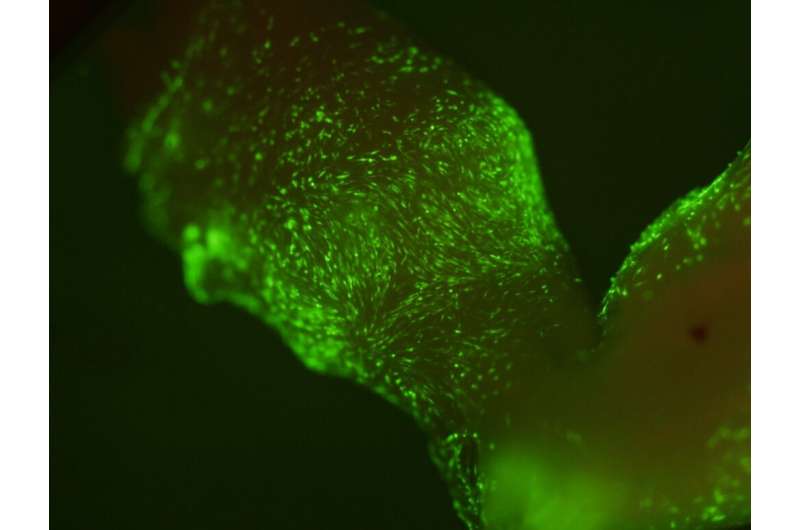From months to weeks: Gene delivery method improved with new ‘one-step’ system

Delivered using adenovirus (Ad) vectors, therapeutic genes address the cause of disease—not just the symptoms. However, while advances in the understanding of human diseases and the genome have led to an increasing number of targeted gene therapies, gene delivery remains a significant challenge.
“We know a lot of genes have important functions and useful therapeutic utilities, but how do you deliver those into cells? That has been a constant challenge,” explained Tong-Chuan He, associate professor of orthopedic surgery and rehabilitation medicine.
According to He and colleagues at the University of Chicago, “The evolution of the adenoviral vector as a tool for transfer of genetic material has revolutionized the way physicians and scientists can approach treating even the most debilitating diseases.” These vectors are the most efficient gene delivery system and compared with other options, offer significant advantages.
Still, current processes used to create Ad vectors are time-consuming, technically challenging, and have not been improved in decades—until now.
Researchers at the University of Chicago, including He, who directs the Molecular Oncology Laboratory, have developed a simplified method to create these vectors. The “one-step construction of Ad” (OSCA) system is “very efficient and user friendly,” said He, who worked with the Polsky Center for Entrepreneurship and Innovation to patent the invention.
“It’s a time-consuming process,” said He, speaking to developing Ad vectors with older methods. “It can take several months with unpredictable outcomes,” He said. Alternatively, the new method takes two to three weeks and is guaranteed to develop a virus.
Developed using the Gibson DNA Assembly (GDA) technique, the system has applications for use in gene therapy and vaccine development. The GDA method has been around for nearly 10 years and is today a popular technology for synthetic biology, noted He. GDA is a useful tool to assemble synthetic and natural genes, genetic pathways, as well as entire genomes.
The work builds off previous research, improving a former system: the “AdEasy” system, which was also developed by He and has been one of the most commonly used techniques worldwide to generate Ad vectors in use by several large pharmaceutical firms and research laboratories.
“The new system makes the whole process very straightforward,” said He. “It’s easier for the average molecular biology lab to make a virus.”
He’s lab at the university is focused primarily on stem cell biology, cancer biology, and regenerative medicine. As part of this research, the group also has a deep interest in developing novel technologies to address these areas. Such interest led to the development of the OSCA system.
“Sometimes you will encounter a challenge and the current technology will not suffice,” said He. “We want to solve scientific problems, but occasionally you really need to develop better tools.”
Source: Read Full Article
